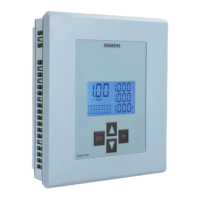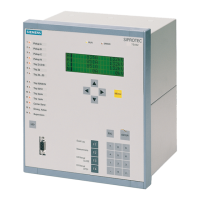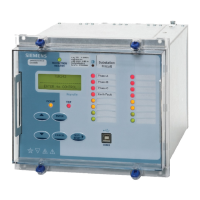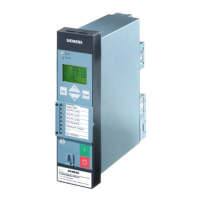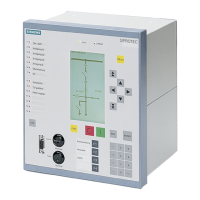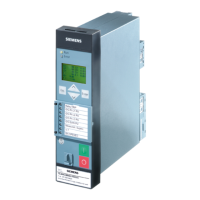4
Transformer Differential Protection (87T and 87HS)
7UT51 v3
60 PRIM-2330C
4.7 Higher
-
Harmonic
Restraint
In addition to inrush, other non-fault conditions can
create a differential current containing excessive
harmonic components. For example, a differential
current resulting from unsymmetrical currents in the
transformer windings will contain an excessive
fourth-harmonic component (in addition to the
second-harmonic component). As another example, a
differential current, resulting from overexcitation of the
protected transformer when a breaker opens and
there is a strong current source near the transformer,
will contain excessive third-harmonic and
fifth-harmonic components. Since a delta connection
will eliminate the third-harmonic current, the
fifth-harmonic current is usually used for this restraint.
Hence, independently of the second-harmonic inrush
restraint, the relay can restrain the differential
protection based on excessive third, fourth, or fifth
harmonic currents.
As in the case of inrush restraint based on the
second-harmonic, restraint based on higher-order
harmonics should operate independently for each
phase since it is possible for a fault to occur on only
one phase. If this happens, the differential current of
that phase will not contain the high percentage of
higher-order harmonic current characteristic of the
non-fault condition, and so the differential protection of
that phase will not be blocked; however, when
appropriate, the relay can be configured to have the
higher-order harmonic restraint of any phase
“crossblock” the differential protection of all three
phases for a configurable duration.
CTs can also produce odd-harmonic content which is
practically absent in the differential current caused by
a fault. To prevent higher-harmonic restraint from
blocking tripping during an internal fault, set a
maximum differential current level above which the
n-th harmonic restraint is rendered ineffective.
The effect of higher-order-harmonic restraint is
illustrated in Figure 4.11 on page 61. Note that if the
differential current becomes larger than the 87HS trip
threshold, a trip will occur (see Section 4.4.2 on
page 56).
See Section 4.10 on page 62 for events that control
and annunciate the start and end of harmonic
restraint.
1613 n. HARMN RSTR
Blocking of the differential protection when the third
-
,
fourth
-
, or fifth
-
harmonic current exceeds the threshold
is set in Address 1614. Operates independently for each
phase, unless crossblocking is set in Address 1615.
Option Description
5TH
HARMONIC
Base restraint on fifth
-
harmonic
current (default).
4TH
HARMONIC
Base restraint on fourth
-
harmonic
current.
3RD
HARMONIC
Base restraint on third
-
harmonic
current.
OFF No restraint based on third
-
, fourth
-
,
or fifth
-
harmonic current.
1614 %n. HARMN
Minimum amount of higher
-
order harmonic differential
current (as a percentage of the fundamental component
of the differential current) that will block the differential
protection (unless Address 1613 is set to OFF).
Range: 10
–
80%
Default: 80%
1615 X
-
BLK nHM
Duration (in cycles) after pickup of the differential
protection to block differential protection on all phases
(crossblock) if higher
-
order harmonic restraint is blocking
it on at least one phase.
Range: 0
–
1000 cycles, or ∞
Default: 0 (no crossblocking)
Specify (in cycles) the duration of crossblocking. Enter 0
for no crossblocking (each phase blocked independently).
Enter ∞ for crossblocking to continue for as long as the
differential protection of any phase is blocked by
higher
-
order harmonic restraint.
1616 IDIFFmax n
Differential current value above which
n
-
th harmonic restraint is released.
Range: 0.5
–
20.0
I
n
Default: 1.5
I
n

